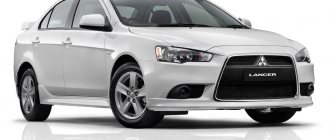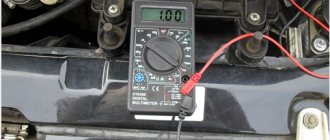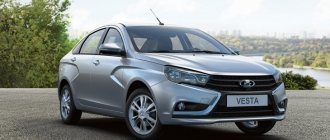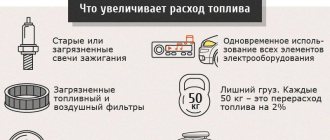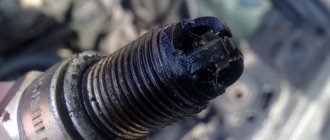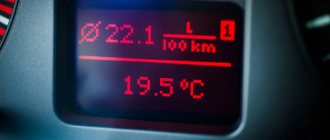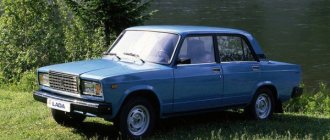Mitsubishi Lancer 9 technical specifications. Mitsubishi Lancer 9 fuel consumption per 100 km
For 40 years now, the Japanese company Mitsubishi has been producing the Mitsubishi Lancer evolution 9. The first production of the car took place in 1973 and was conceived as a mass model. In different countries, during this time, the car was called differently: Mitsubishi Libero and Galant Fortis and Eagle Summit, etc. Naturally, since then there have been many releases of different generations, but we will focus on the currently popular Mitsubishi Lancer 9th generation. The first cars of this generation began to be sold in Japan in 2000 under the name Cedia and were offered in two body versions - sedan and station wagon. In 2003, the restyled Lancer 9 appeared on European markets, also in sedan and station wagon body styles, but in a more aggressive form, it had a different front design: double radiator trim, length 4535 mm and width 1715 mm (excluding side mirrors) .
Dimensions of Mitsubishi Lancer 9:
mitsubishi lancer 9 technical specifications, ground clearance of mitsubishi lancer 9
Compared with its predecessor, the height of the Lancer 9 sedan has increased by 50 mm and is now 1445 mm, the width has increased to 1715 mm. Legroom for passengers has also increased by 60 mm. Mitsubishi Lancer station wagon dimensions: height – 1450, length – 4485, width 1695. In both the sedan and station wagon, the ground clearance of the Mitsubishi Lancer 9 is 165 mm, the wheelbase is 2600 mm.
Mitsubishi Lancer in detail about fuel consumption
You spent a long time choosing which car to buy and decided to opt for the Japanese company Mitsubishi, but are you interested in the fuel consumption of the Mitsubishi Lancer per 100 km? Then our article will be very useful for you. We will tell you about the fuel consumption of Lancer 9 and 10.
Japanese company Mitsubishi
But first, let's say a few words about the company that produced this incredibly stylish and powerful car. Mitsubishi Motors Corporation is a famous Japanese company engaged in the creation of automobiles. It is believed that its founder was Yataro Iwasaki. It is the image of his family coat of arms that underlies the Mitsubishi symbol. This is the well-known shamrock - three diamond-shaped oak leaves arranged in the shape of a flower. The company's headquarters is located in Tokyo.
| Engine | Consumption (highway) | Consumption (city) | Consumption (mixed cycle) |
| 1.6 MIVEC 5-mech | 5.2 l/100 km | 8 l/100 km | 6.2 l/100 km |
| 1.6 MIVEC 4-auto | 6.1 l/100 km | 8 l/100 km | 7.3 l/100 km |
| 1.5 MIVEC | 6 l/100 km | 8.9 l/100 km | 7 l/100 km |
| 1.8 MIVEC | 6.1 l/100 km | 10.3 l/100 km | 7.6 l/100 km |
| 2.0 MIVEC | 6.6 l/100 km | 10.8 l/100 km | 8.1 l/100 km |
| 2.4 MIVEC | 8.4 l/100 km | 11.2 l/100 km | 10.2 l/100 km |
| 1.8 DI-D | 4.4 l/100 km | 6.2 l/100 km | 5.2 l/100 km |
| 2.0 DI-D | 5.2 l/100 km | 8.5 l/100 km | 6.4 l/100 km |
| 1.8 DI-D | 4.8 l/100 km | 6.8 l/100 km | 5.5 l/100 km |
Now the company is developing steadily. It has produced several world-famous series of machines that are respected throughout the world. These are ASX, Outlander, Lancer, Pajero Sport. One of the features of these cars is economical fuel consumption when driving on the highway.
Over the course of a year, the company manages to produce more than one and a half million “iron horses,” which are sold in one hundred and sixty countries around the world. And this is not the limit. The company continues to increase its turnover.
Lancer history
Pioneer
One of the most famous, successful and sought-after Mitsubishi series is Lancer. The first swallow of the line - the A70 model - saw the world at the end of winter 1973. It was produced in the following body styles:
- sedan with 2 doors;
- sedan with 4 doors;
- station wagon with 5 doors.
The engine size also varied (the larger the volume, the greater the fuel consumption):
- 1.2 liters;
- 1.4 liters;
- 1.6 liters.
Generation number two
In 1979, a new Lancer series appeared - EX. At first it was equipped with engines that could have three displacement options:
- 1.4 l (power - 80 horsepower);
- 1.6 l (85 horsepower);
- 1.6 l (100 horsepower).
But, a year later, another Lancer model appeared in the lineup with a more powerful engine - 1.8 liters. In addition, sports cars with other engines were produced.
In terms of fuel consumption, even the second generation Mitsubishi Lancer was very economical. The fuel consumption test, which passenger cars underwent in ten modes, showed fuel consumption of only 4.5 liters per 100 kilometers
. Well, if the Lancer owner drove mainly at a speed of 60 km per hour, then the fuel consumption was 3.12 liters per 100 km.
Third knee
The car of the third “level” appeared in 1982 and was called Lancer Fiore, had two body options:
- hatchback (since 1982);
- station wagon (since 1985).
Such Lancers were produced until 2008. A feature of this line was that the cars began to be equipped with turbocharging, as well as an injector. Like the previous ones, they were equipped with engines of different sizes, on which fuel consumption depended:
- 1.3 l;
- 1.5 l;
- 1.8 l.
Mitsubishi Lancer 9 with ICE 4G92 and 4G93
Old 5th generation models from 1992-2000 were equipped with 1.6-liter 4-cylinder 4G92 engines. According to owner reviews, gasoline consumption on this engine is 6-7 l/100 km on the highway, 11-12 l/100 in the city. In the combined cycle it takes about 8-9 liters per hundred, which is an acceptable value. The differences from version 4G15 are minimal or non-existent.
4G93 engines were installed on 6th generation Lancers. They are 1.8-liter power units producing 110 hp. (atmospheric) and 150 hp. (with turbine). Essentially, these engines are the same 1.5-liter internal combustion engines, but with a bored out cylinder block and larger pistons in diameter.
It is recommended to fill them with AI-95 and AI-98 gasoline, but AI-92 is also allowed. Note that although the Japanese indicate in the specifications gasoline with an octane rating of 92 as acceptable for use on 4G93, it is undesirable to pour it into the tank due to the fact that in Russia things are worse with fuel quality control than in European countries, and even more so in Japan.
According to reviews from car owners, standard gasoline consumption on the 4G93 ranges from 8 to 9 liters per 100 km in the city, 6-7 liters on the highway. As with any other engines, there are also problems associated with the “guzzling” of gasoline. On some Lancers it is 15-16 liters per hundred. The causes of these problems can be very diverse - they can be determined during diagnosis.
JUST HUGE GASOLINE CONSUMPTION
Moderators: mek, indy
JUST HUGE GASOLINE CONSUMPTION
#1 Post by ASRaceR » 25 Nov 2007, 19:44
On my Lancer Cedia 1.5, from the moment of purchase (10 months), the fuel consumption in the city was 10-11 liters, on the highway up to 120 about 7-8 liters, 140 and > about 11. And just a month ago the Lancer became eat like a tractor. on the highway up to 120 km/h 14 liters of 92 gasoline. The air filter is new, the spark plugs were changed a month ago, the throttle is clean, the filter in the injection pump is clean, it starts great in any weather. It feels like the dynamics have worsened, the engine has started to make a lot of noise when accelerating, and sometimes the hydraulics still make a knocking noise at idle. And also, warm up the car at idle to 90 degrees. Not possible at all, even for 10 minutes. at least 20 min. warm it up only after you have driven a few km. it warms up.
Tell me what to do to get rid of such a huge expense.
And in general, what should be the normal consumption for this car?
Good day, friends! If you are the owner of a Mitsubishi Lancer 9, then spend a few minutes studying this material - it is quite possible that it will be useful to you. Precisely because Lancer 9 fuel consumption is the topic of our discussion today.
Automatic transmission and 2-liter version are his appetites
The situation is also disappointing with the automatic transmission. You can safely add 1.5–2 liters to reach real values. Some owners note the appetites of their Lancer, reaching up to 15 liters! The 2.0 liter version of the Japanese car is even capable of bankrupting the owner. Fuel consumption is up to 13 liters, based solely on the car’s passport data. On the highway the car consumes less, up to about 8.5–8.6 liters.
In many ways, the consumption component, in other words, the car’s gluttony, is influenced by the driving method that the driver prefers. Some are reckless and start from a standstill, and what kind of consumption can you expect in this case? Yes, yes to very high)
And now the data provided by the manufacturer.
Fuel consumption
| Name | Mixed driving cycle | City driving cycle | Country driving cycle | |||
| CO2 emissions (g/km) | Fuel consumption (l/100 km) | Fuel consumption (l/100 km) | Fuel consumption (l/100 km) | |||
| For cars with a sedan body | Models 1300 | Basic equipment | 155 | 6,5 | 8,5 | 5,3 |
| Full set | 157 | 6,6 | 8,6 | 5,4 | ||
| Models 1600 | Vehicles with manual transmission | Basic equipment | 160 | 6,7 | 8,8 | 5,5 |
| Full set | 163 | 6,8 | 9,0 | 5,6 | ||
| Cars with automatic transmission | 191 | 8,0 | 10,6 | 6,6 | ||
| Models 2000 | Vehicles with manual transmission | 199 | 8,4 | 11,7 | 6,5 | |
| Cars with automatic transmission | 213 | 9,0 | 12,6 | 6,9 | ||
| For cars with a station wagon body | Models 1600 | Vehicles with manual transmission | 166 | 7,0 | 8,9 | 5,8 |
| Cars with automatic transmission | Basic equipment | 195 | 8,2 | 10,7 | 6,8 | |
| Full set | 197 | 8,3 | 10,8 | 6,8 | ||
| Models 2000 | 207 | 8,7 | 11,8 | 6,9 |
Comments (8)
Terrible fuel consumption per 100 km in the city, consumption is approximately 22 - 25 liters 95 benz I searched on your website but did not find such a topic (((Changed the spark plugs and air filter? I didn’t notice any special changes (((2.0 automatic transmission 4G94 Lancer 9
I think you need to go to the service station!
Automatic transmission 1.6 2009 sedan, consumption is approximately 13-14 liters AE92. I was in the showroom, they tested the engine, they said that the sensors were normal, but it was consuming gasoline and not consuming oil. I don't know what's wrong with the engine.
1.6 AT. In the city 12 l / 100 km, with air conditioning 13 - 14 l / 100 km. True, I press the slipper well from the traffic light, turn it up to 5000, and sometimes even to the cutoff.
Engine 1300. AI-92. On the highway and a little around the city, 8 liters per hundred. Speed 120-140 mostly. Isn't the consumption too high?
L9 Sport MT City - 12.5 in penny mode. 13-14 is normal. 15+ with floor-length sneakers Track 9 Mixed 11
1.6 MT City 8.5 pensioner, 10-11 floor slipper Highway 5 liters at 80-90 km/h
2.0 MT Station wagon in summer, city: 10 l. highway up to 100 km/h: 8 l, above 120 km/h: from 15 l. winter, city: 15 l. the route is about the same as in summer. The car is very uneconomical, the older all-wheel drive Legacy on the automatic machine ate the same.
Mitsubishi Lancer 9th generation
The 9th generation Lancers rolled off the assembly line from 2003 to 2009 and were available in sedan and station wagon bodies. Although the Cedia model, which has been sold since 2000, is also considered to be a ninth-generation car. The engine line was represented by gasoline engines of 1.3 liters (69 hp), 1.6 liters (120 and 124 hp) and 2.0 liters (170 hp). In North America, cars with 2.4 liter engines (164 hp) were popular.
Reviews of the real consumption of Mitsubishi Lancer IX
- Anatoly, Moscow. I purchased a ninth generation Mitsubishi Lancer 2004 with a 1.5 liter engine. Of course, this sedan is far from a sports car, and the engine power is not for high speeds. But 6-7 liters of gasoline per hundred kilometers is a very economical option.
- Sergey, St. Petersburg. I bought a car from the second owner, I had to work on it, but only a little, because Mitsubishi is a very high-quality equipment. The mechanical component is excellent. On good roads it consumes about 6-6.5 liters per hundred, even with air conditioning. Model 2007, 1.6, manual.
- Artem, N. Novgorod. Mitsubishi Lancer 2003, 1.5, manual. Before him, I drove a liter Matiz. Of course, these are completely different cars in terms of reliability, dynamics, and comfort. But they have one thing in common - consumption is from 5 to 7 liters. But the Lancer only needs 95 gasoline.
- Alexey, Saratov. My Mitsubishi Lancer has a 1.8 liter CVT engine. Of course, the power is at the level, and it accelerates without strain. If I drive alone, I spend about 11 liters in the city, but when four passengers are seated, it already goes up to 13-14 liters. It seems to me that this is too much.
- Boris, Omsk. I am the owner of a Mitsubishi Lancer 1.6, automatic transmission, 2008 model. When traveling long distances, I specifically measure fuel consumption. At a speed of 80-90 km/h it takes about 6.5 liters. The higher the speed, the higher the consumption. In the city it reaches 11 liters.
- Bogdan, Tula. Since I often have to travel around the country on business trips, I decided to buy a car. The criteria were: power, reliability, economical consumption. Mitsubishi Lancer of the ninth generation 2008 with a 1.8 engine came just in time. Within 100 km/h, about 9-10 liters are consumed, up to 150 km/h consumption increases to 14 liters.
- Stepan, Tambov. My Mitsubishi Lancer is equipped with a 1.6 liter engine paired with an automatic transmission. This car can rightfully be called a city car. Its consumption is very economical - on the highway 6-7 liters, in the city up to 10 liters of gasoline. Air conditioning and driving in traffic jams increase consumption just a little.
Mitsubishi Lancer 1.3, 1.5, 1.6, 1.8, 2.0 fuel consumption per 100 km. 7, 8, 9, 10 generation
Mitsubishi Lancer is a compact car from Mitsubishi, and one of the most popular models of the Japanese brand. Lancer has an extensive history, as ten generations of Lancer have already been released. The first generation appeared on the market back in 1973. The model is sold all over the world, but had different names - Chrysler Lancer, Eagle Summit, Galan Fortis, Mitsubishi Mirage and others. Lancer's competitors include Toyota Corolla, Citroen C4, Peugeot 408, Honda Civic and other C-class cars. Since 2007, the 10th generation Lancer has been produced, as well as its charged modification Evolution.
- Mitsubishi Lancer engines. Official fuel consumption per 100 km.
- Generation 7 (1995-2000)
- Restyling generation 9 (2005-2010)
- Generation 10 (2007-2010)
- Restyling generation 10 (2011-2015)
- Second restyling of generation 10 (2015-present)
- Mitsubishi Lancer owner reviews
- Generation 7
- Generation 8
- Generation 9
- With 1.3 engine
- With 1.6 manual transmission engine
- With engine 1.6 automatic transmission
- With 2.0 engine
- Generation 10
- With 1.5 engine
- With 1.6 engine
- With 1.8 engine
Mitsubishi Lancer engines. Official fuel consumption per 100 km.
Generation 7 (1995-2000)
- 1.3, 88 l. p., manual/automatic, front
- 1.3, 75 l. p., manual, front, 12.5 sec to 100 km/h, 9.2/5.5 l per 100 km
- 1.3, 75 l. p.s., automatic, front, 15.8 sec to 100 km/h, 10.6/6.5 l per 100 km
- 1.5, 94 l. p., automatic/mechanical, front
- 1.5, 110 l. p., manual/automatic, front/full
- 1.6, 175 l. p., manual/automatic, front
- 1.8, 135 l. p., automatic, front
- 1.8, 125 l. p., manual/automatic, front
- 1.8, 205 l. p., manual/automatic, front/full, 11.9 sec to 100 km/h
Generation 9 (2000-2005)
- 1.3, 82 l. p., manual/automatic, front, 13.7 sec to 100 km/h, 8.5/5.3 l per 100 km
- 1.5, 91 l. p., variator/mechanics, front/full
- 1.5, 100 l. p., variator/mechanics, front/full
- 1.6, 98 l. p., manual/automatic, front, 8.8/5.5 – 10.3/6.4 l per 100 km, 11.8-13.6 sec to 100 km/h
- 1.8, 114 l. p., variator, front
- 1.8, 130 l. p., variator, full/front
- 1.8, 165 l. p., automatic, front
- 2.0, 120 l. p., manual/automatic, front
- 2.0, 135 l. p., manual/variable, front, 9.6 sec to 100 km/h, 11.7/6.5 l per 100 km
- 2.0, 135 l. p.s., automatic, front, 12 sec to 100 km/h, 12.6/6.9 l per 100 km
- 2.4, 162 l. p., manual/automatic, front, 10.7/8.4 l per 100 km
Restyling generation 9 (2005-2010)
- 1.3, 82 l. p., manual/automatic, front, 13.7 sec to 100 km/h, 8.5/5.3 l per 100 km
- 1.5, 91 l. p., variator/mechanics, front/full
- 1.5, 100 l. p., variator/mechanics, front/full
- 1.6, 98 l. p., manual/automatic, front, 8.8/5.5 – 10.3/6.4 l per 100 km, 11.8-13.6 sec to 100 km/h
- 1.8, 114 l. p., variator, front
- 1.8, 130 l. p., variator, full/front
- 1.8, 165 l. p., automatic, front
- 2.0, 120 l. p., manual/automatic, front
- 2.0, 135 l. p., manual/variable, front, 9.6 sec to 100 km/h, 11.7/6.5 l per 100 km
- 2.0, 135 l. p.s., automatic, front, 12 sec to 100 km/h, 12.6/6.9 l per 100 km
- 2.4, 162 l. p., manual/automatic, front, 10.7/8.4 l per 100 km
Generation 10 (2007-2010)
- 1.5, 109 l. s.. manual, front, 11.6 sec to 100 km/h, 8.2/5.4 l per 100 km
- 1.5, 109 l. p.s., automatic, front, 14.3 sec to 100 km/h, 8.9/6 l per 100 km
- 1.6, 117 l. p.s., automatic, front, 14 sec to 100 km/h, 9.1/5.8 l per 100 km
- 1.6, 117 l. p., manual, front, 10.8 sec to 100 km/h, 7.8/5 l per 100 km
- 1.8, 143 l. p., variator, front, 11.2 sec to 100 km/h, 10.9/6.2 l per 100 km
- 1.8, 143 l. p., manual, front, 9.8 sec to 100 km/h, 10.4/6.1 l per 100 km
- 2.0, 150 l. sec., CVT, full, 11.4 sec to 100 km/h, 12.1/6.8 l per 100 km
- 2.0, 150 l. pp., manual, full, 9.8 sec to 100 km/h, 11.2/6.9 l per 100 km
- 2.4, 168 l. p., manual, front, 11.2/8.4 l per 100 km
- 2.0, 140 l. p., manual/variable, front, 9.6 sec to 100 km/h, 8.2/4.9 l per 100 km
Super economical or gluttonous. Fuel consumption Mitsubishi Lancer 9
Good day, friends! If you are the owner of a Mitsubishi Lancer 9, then spend a few minutes studying this material - it is quite possible that it will be useful to you. Precisely because Lancer 9 fuel consumption is the topic of our discussion today.
How much does the most common version of Lancer “eat”?
This car model, especially in the 1.6 liter engine version, is one of the quite common ones on domestic roads. But, let us immediately note that the machine is considered to be quite picky about the quality of fuel. To increase the service life of the engine, you should fill it with proven gasoline. By the way, this also affects the Lancer’s fuel consumption per 100 km. Drivers who previously refueled exclusively with grade 98 often later complained of symptoms of engine overheating.
If the engine itself is functioning properly, then the consumption rate remains within the factory recommended values. However, it’s not in vain that we decided to write today’s review. In practice, even owners of such low-power engines experience high consumption, sometimes reaching 15 liters for every 100 kilometers traveled. One of the main factors may be a faulty catalyst. It is unlikely that it will help to remove the old faulty part, but rather you will have to purchase a new one to replace it. Due to deposits, the catalyst fails - this is the quality of domestic gasoline. And along with it, you will have to replace the spark plugs along the way.
So, what do we have when we want to know how much our beloved Lancer eats? First, we turn to the instruction manual and see the data specified by the manufacturer. We see that consumption in the urban cycle should be kept at around 10.6 liters, in highway mode it should not exceed 6.6 liters, and in mixed driving style it should be exactly 8 liters. Real data suggests that at least 1–1.5 liters should be added to these numbers.
Automatic transmission and 2-liter version are his appetites
The situation is also disappointing with the automatic transmission. You can safely add 1.5–2 liters to reach real values. Some owners note the appetites of their Lancer, reaching up to 15 liters! The 2.0 liter version of the Japanese car is even capable of bankrupting the owner. Fuel consumption is up to 13 liters, based solely on the car’s passport data. On the highway the car consumes less, up to about 8.5–8.6 liters.
In many ways, the consumption component, in other words, the car’s gluttony, is influenced by the driving method that the driver prefers. Some are reckless and start from a standstill, and what kind of consumption can you expect in this case? Yes, yes to very high)
And now the data provided by the manufacturer.
| Engine and transmission | Fuel consumption in the urban cycle, l/100km | Fuel consumption in the extra-urban cycle, l/100km | Fuel consumption in the combined cycle, l/100km |
| 1.3 (82 hp) manual transmission | 8,5 | 5,3 | 6,5 |
| 1.6 (98 hp) manual transmission | 8,8 | 5,5 | 6,7 |
| 1.6 (98 hp) automatic transmission | 10,3 | 4,4 | 7,9 |
| 2.0 (135 hp) manual transmission | 11,7 | 8,4 | 6,5 |
| 2.0 (135 hp) automatic transmission | 12,6 | 9 | 6,9 |
How much does the subcompact version consume?
If you are one of those who prefer to save on servicing a Lancer, purchase a modest and low-power 1.3 liter version with an engine of just 83 horsepower. Statistics for this configuration indicate that, according to official data, again, a car with such an engine should “eat” a maximum of 8.6 liters. Having turned to the owners for feedback, we find that in reality it comes out to 9.63 when driving around the city. If you have your own excellent data, write to us.
With this we will say goodbye, friends. There are many other useful discussions ahead of us regarding fuel consumption of other car brands, and not only. Subscribe to the blog and stay up to date with events. Bye!
Reasons for increased gasoline consumption
Not a single service station technician will tell you why gasoline is being wasted without preliminary diagnostics. The problem may lie in the internal combustion engine itself, or in the fuel supply system, injector, carburetor (9th Lancers can have one of two power systems).
Often, owners simply operate engines incorrectly, which leads to increased consumption:
- constant stops in the city, sudden starts,
- intensive acceleration when overtaking,
- driving at consistently high speeds, using winter tires in the warm season (and vice versa),
- deflated wheels,
- untimely replacement of oil and other consumables - this causes increased fuel consumption.
Technical problems faced by Mitsubishi Lancer 9 owners:
- Clogged injectors, which leads to incorrect injection. The solution is to clean them or replace them.
- Incorrect operation of the fuel pump, due to which the pressure in the fuel system “jumps”. This results in an incorrectly proportioned fuel-air mixture.
- Exhaust gas recirculation (EGR) valve clogged. Through it, part of the exhaust gases is returned back to the engine, and this operation is controlled by the ECU, which opens and closes the valve. Over time, soot accumulates on it, and this leads to jamming of the valve. Then, during the entire operating time, a “porridge” of air, exhaust gases, and gasoline enters the combustion chamber - such a mixture is ineffective, and this leads to increased consumption. The solution is to clean the valve from burning and soot. This operation is even prescribed in the technical passport for some cars as a mandatory maintenance measure.
- Oil of incorrect viscosity or poor quality, which leads to increased friction between the pistons and cylinder walls.
- Oxygen sensor (lambda probe). Some Lancer owners overcome overspending only after replacing the lambda probe. This sensor determines the amount of oxygen in the exhaust and, based on this information, the ECU optimizes the mixture composition, supplying more or less fuel to the cylinders. Incorrect operation of the oxygen sensor increases the “appetite” of the engine.
In fact, there are many more reasons, and sometimes a whole complex of problems leads to increased consumption.
Mitsubishi Lancer 9 is not the most economical car. They received efficient and reliable engines with a service life of 250+ thousand kilometers, but they cannot be praised for their record low “appetite”.
December 17th, 2014 Admin
For 40 years now, the Japanese company Mitsubishi has been producing the Mitsubishi Lancer evolution 9. The first production of the car took place in 1973 and was conceived as a mass model. In different countries, during this time, the car was called differently: Mitsubishi Libero and Galant Fortis and Eagle Summit, etc. Naturally, since then there have been many releases of different generations, but we will focus on the currently popular Mitsubishi Lancer 9th generation. The first cars of this generation began to be sold in Japan in 2000 under the name Cedia and were offered in two body versions - sedan and station wagon. In 2003, the restyled Lancer 9 appeared on European markets, also in sedan and station wagon body styles, but in a more aggressive form, it had a different front design: double radiator trim, length 4535 mm and width 1715 mm (excluding side mirrors) .
Dimensions of Mitsubishi Lancer 9:
mitsubishi lancer 9 technical specifications, ground clearance of mitsubishi lancer 9
Compared with its predecessor, the height of the Lancer 9 sedan has increased
at 50 mm now
is 1445 mm
,
width
increased
up to 1715 mm
. Legroom for passengers has also increased by 60 mm. Mitsubishi Lancer station wagon dimensions: height – 1450, length – 4485, width 1695. Both in a sedan and station wagon
clearance
Mitsubishi Lancer 9 is –
165 mm
, wheelbase 2600 mm.
Fuel consumption Mitsubishi Lancer IX 1.6i MT (98 hp)
Official data reflects the fuel consumption provided by the manufacturer of the Mitsubishi Lancer IX 1.6i MT (98 hp) , it is indicated in the car’s service book, and can also be found on the manufacturer’s official website. Real fuel consumption data is based on the testimony of Mitsubishi Lancer IX 1.6i MT (98 hp) who left fuel consumption information on our website.
If you are the owner of a Mitsubishi Lancer IX 1.6i MT (98 hp) , and you know at least some data about the fuel consumption of your car, then you can influence the statistics below. It is possible that your data will differ from the given vehicle fuel consumption figures, in which case we ask you to immediately enter this information on the website to correct and update it. The more owners add their data on the real fuel consumption of their car, the more accurate the information obtained about the true fuel consumption of a particular car will be.
The table below shows average fuel consumption values for the Mitsubishi Lancer IX 1.6i MT (98 hp) . Next to each value, the amount of data on which the average fuel consumption is calculated is indicated (i.e., this is the number of people who filled out the information on the site). The higher this number, the more reliable the data obtained.
| # | Locality | Region | Consumption | Qty |
| Zaporozhye | Zaporozhye region | 7.93 | 3 | |
| Miass | Chelyabinsk region | 8.00 | 1 | |
| Yaroslavl | Yaroslavl region | 8.00 | 1 | |
| Eagle | Oryol Region | 8.00 | 1 | |
| Kamensk-Uralsky | Sverdlovsk region | 8.00 | 1 | |
| Krasnoyarsk | Krasnoyarsk region | 8.30 | 1 | |
| Prokopyevsk | Kemerovo region | 8.50 | 2 | |
| Poltava | Poltava region | 8.50 | 1 | |
| Stavropol | Stavropol region | 8.50 | 2 | |
| Tolyatti | Samara Region | 8.57 | 3 | |
| Zhytomyr | Zhytomyr Oblast | 9.00 | 1 | |
| Odessa | Odessa region | 9.00 | 2 | |
| Sevastopol | Sevastopol | 9.00 | 2 | |
| Kostroma | Kostroma region | 9.00 | 1 | |
| Kursk | Kursk region | 9.00 | 3 | |
| Kirov | Kirov region | 9.00 | 1 | |
| Dnepropetrovsk | Dnepropetrovsk region | 9.00 | 3 | |
| Lipetsk | Lipetsk region | 9.00 | 1 | |
| Izhevsk | Republic of Udmurtia | 9.00 | 2 | |
| Stakhanov | Lugansk region | 9.00 | 1 | |
| Odintsovo | Moscow region | 9.00 | 1 | |
| Tambov | Tambov Region | 9.00 | 1 | |
| Novosibirsk | Novosibirsk region | 9.00 | 1 | |
| Peaceful | Arhangelsk region | 9.00 | 1 | |
| Dubna | Moscow region | 9.00 | 1 | |
| Balakhna | Nizhny Novgorod Region | 9.00 | 1 | |
| Khanty-Mansiysk | Khanty-Mansiysk Autonomous Okrug | 9.00 | 1 | |
| Saratov | Saratov region | 9.08 | 6 | |
| Kaluga | Kaluga region | 9.10 | 2 | |
| Mezhdurechensk | Kemerovo region | 9.25 | 1 | |
| Voronezh | Voronezh region | 9.25 | 2 | |
| Bryansk | Bryansk region | 9.30 | 1 | |
| Petrozavodsk | Republic of Karelia | 9.30 | 5 | |
| Smolensk | Smolensk region | 9.40 | 2 | |
| Kazan | Republic of Tatarstan | 9.42 | 6 | |
| Kyiv | Kyiv | 9.49 | 16 | |
| Kharkiv | Kharkov region | 9.50 | 5 | |
| Podolsk | Moscow region | 9.50 | 1 | |
| Dneprodzerzhinsk | Dnepropetrovsk region | 9.50 | 1 | |
| Samara | Samara Region | 9.50 | 3 | |
| Vinnitsa | Vinnytsia region | 9.50 | 2 | |
| Vladimir | Vladimir region | 9.50 | 3 | |
| Krasnodar | Krasnodar region | 9.54 | 7 | |
| Nizhnekamsk | Republic of Tatarstan | 9.55 | 2 | |
| Ufa | Republic of Bashkortostan | 9.59 | 6 | |
| Pskov | Pskov region | 9.60 | 3 | |
| Novocheboksarsk | Chuvash Republic | 9.80 | 1 | |
| Moscow | Moscow | 9.85 | 23 | |
| Saint Petersburg | Saint Petersburg | 9.92 | 11 | |
| Irkutsk | Irkutsk region | 10.00 | 3 | |
| Belgorod | Belgorod region | 10.00 | 1 | |
| Vladikavkaz | Republic of North Ossetia (Alania) | 10.00 | 2 | |
| Nikolaev | Nikolaevkskaya area | 10.00 | 1 | |
| Nizhny Novgorod | Nizhny Novgorod Region | 10.00 | 6 | |
| Orenburg | Orenburg region | 10.00 | 4 | |
| Dedovsk | Moscow region | 10.00 | 1 | |
| Yoshkar-Ola | Mari El Republic | 10.00 | 1 | |
| Armavir | Krasnodar region | 10.00 | 1 | |
| Ternopil | Ternopil region | 10.00 | 1 | |
| Surgut | Khanty-Mansiysk Autonomous Okrug | 10.00 | 2 | |
| Tula | Tula region | 10.00 | 2 | |
| Kemerovo | Kemerovo region | 10.00 | 1 | |
| Ulyanovsk | Ulyanovsk region | 10.17 | 3 | |
| Velikiy Novgorod | Novgorod region | 10.25 | 2 | |
| Chelyabinsk | Chelyabinsk region | 10.25 | 4 | |
| Cheboksary | Chuvash Republic | 10.27 | 4 | |
| Ivano-Frankivsk | Ivano-Frankivsk region | 10.40 | 5 | |
| Lviv | Lviv region | 10.40 | 2 | |
| Rostov-on-Don | Rostov region | 10.50 | 5 | |
| Tver | Tver region | 10.50 | 2 | |
| Ryazan | Ryazan Oblast | 10.66 | 5 | |
| Nizhnevartovsk | Khanty-Mansiysk Autonomous Okrug | 11.00 | 1 | |
| Tyumen | Tyumen region | 11.00 | 2 | |
| Khimki | Moscow region | 11.00 | 1 | |
| Tomsk | Tomsk region | 11.00 | 1 | |
| Ekaterinburg | Sverdlovsk region | 11.00 | 3 | |
| Permian | Perm region | 12.00 | 1 | |
| Cherkasy | Cherkasy region | 12.00 | 1 | |
| Omsk | Omsk region | 12.50 | 2 | |
| Kirovograd | Kirovograd region | 13.00 | 1 |
The table below shows in sufficient detail the dependence of fuel consumption on the speed of the Mitsubishi Lancer IX 1.6i MT (98 hp) on the highway. Each speed value corresponds to a certain fuel consumption. If the Mitsubishi Lancer IX 1.6i MT (98 hp) has data for several fuel types, they will be averaged and shown in the first row of the table.
The popularity index shows how popular a given car is on this site, namely, the percentage of added information about the fuel consumption of Mitsubishi Lancer IX 1.6i MT (98 hp) to the fuel consumption data of the car that has the maximum amount of added data from users . The higher this value, the more popular the car is on this project.
The position in the fuel economy car rankings for the Mitsubishi Lancer IX 1.6i MT (98 hp) is calculated based on average fuel consumption data among all cars for which information is available on the site. The lower the fuel consumption, the higher the position in the ranking of economical cars. Cars with the same fuel consumption occupy the same position.
Mitsubishi Lancer X
Mitsubishi Lancer X 1.5 AT+MT
About the configuration
The weakest, but quite common modification in the world. The secret of success is banal - engine efficiency. The power unit has 109 horsepower in reserve. It is powered by gasoline and is driven by the front wheels. Works with mechanics and automatics. It reaches a hundred in 10.4 seconds. Maximum acceleration is 182 km/h. Consumption in the city is 8.3 l, on the highway – 5.6 l.
Real reviews about consumption
- Alexey, Kemerovo. I recently sold my tenth Lancer 1.5 AT 2011, and I don’t regret it. It doesn’t drive that fast, but it eats as if there’s a 2-liter unit under the hood. In a word, it turns out to be 8 liters on the highway in fourth gear. Maybe I'm being picky, but the same Corolla eats 6.5 liters.
- Timur, Vladimir. I have a 1.5 liter Lancer with manual transmission. For three years he went about his business, and for another two he fed me (I work in a taxi). Every day the mileage increases to 200 km. At this distance I fill 19-20 liters in the morning. And by evening the tank dries out. Year of release – 2010.
- Maxim, Anapa. The 1.5 AT unit is more suitable for city walks than for the race track. On the highway it picks up speed very quickly, but at one moment it freezes and then the speed drops sharply. But in big cities, moving 40-60 km/h, the consumption will be within 10-11 liters.
- Nikolay, Novgorod. I bought a 5-year-old Lancer 1.5 AT in 2014. I took it in the summer, so the entire warm season seemed like a fairy tale to me in terms of consumption (9.5 in mixed mode). But with the cold weather, another 2.5 liters per hundred increased. And this is already a bit much for such a leisurely engine.
- Sergey, Noginsk. I am amazed at those who count every 20 grams of gasoline and cry about high consumption. I myself drive a Lancer 1.5 MT 2010. Before that I drove VAZ 2109 and 2114. I didn’t notice any difference when switching to a Japanese car. Well, the same 9-10 liters come out. But in terms of dynamics, Mitsubishi will blow anyone's nose.
Mitsubishi Lancer X 1.6 AT+MT
Engine characteristics
This is the most unpretentious and popular “ten” among Lancers. It is with this installation that dealers offer a maximum of different configurations. Power – 117 hp Gearbox - MT or AT. The release was made from 2011 to 2015. It can accelerate from zero to 100 km/h in 10.8 seconds. Maximum acceleration is 191 km/h. Consumption: in urban conditions - 8 l, on the highway - 5.2 l.
Fuel consumption in the city and on the highway
- Dmitry, Sochi. Before that, I had a Toyota Premium 1.8 liter 2002 for a long time. But I wanted to update the year, and switching to the same brand is boring. Therefore, I chose the tenth Lancer 2010 1.6 AT. Previously, I filled 21 liters per 200 km and that was enough. Now this distance takes 19 liters. A little, but in fact I began to save.
- Andrey, Krasnoyarsk. I consider my Mitsubishi 1.6 manual to be the golden mean. It consumes little (7.8 liters on the highway, 9.7 in the city) and 117 horses are enough for the eyes. In fact, when overtaking, you almost never press the gas to the floor.
- Anatoly, Moscow. After purchasing a new Lancer 1.6 AT in 2012, it began to use only 95 gasoline. But over time I switched to 92nd. I didn’t notice any difference in dynamics, and consumption increased by some 0.5 liters on average. As it came out to be 10-10.5 liters in the mixture, that’s how it comes out.
- Ivan, Vyborg. Lancer 2011 I've been trying to save fuel for the last week, because... There are still 10 days until payday. I often coast, and it saves almost 2 liters on the highway (honestly). When I had money, the onboard showed 8.1 liters per hundred square meters. Now it comes out to about 6.6 liters.
- Georgy, Kirishi. Based on my experience, the Lancer 1.6 AT consumes no less gasoline than a Focus model with a similar configuration. But in terms of speed gain, the Mitsubishi will be noticeably better. On an empty highway outside the city you get 7.4 liters of diesel fuel. Not much, but it can also be more economical.
Mitsubishi Lancer X 1.8 CVT+MT
Motor information
European version with a powerful 143 hp unit. and traditional drive to the front axle. Here the developers did not betray themselves, using gasoline as fuel. The choice of transmissions is not great, but it is there (variator or manual). One hundred on the speedometer is reached in 11.2 seconds. Maximum acceleration is 192 km/h. Consumption: city - 10.9 l, highway - 6.2 l.
Reviews from car owners
- Igor, Krymsk. Lancer 1.8 CVT 2012. A car for those who don’t like to go to gas stations often, but just love speed. She doesn't notice the first three gears. It fires like a pistol. And then it cools down a little, but it’s hard for competitors to catch up with it. About refueling: if 12 liters in city-highway mode is a lot, then drive domestic “cans”. There the consumption is lower and the dynamics are “cool”.
- Ruslan, Lipetsk. I drove a Lancer 1.8 manual 143 hp for two winters. (2012). It rows through snowdrifts like a UAZ. But he also asks for almost 12.5-14 liters for his services, depending on road conditions and weather. By the way, studded tires also take their grams of gasoline.
- Alexey, Yoshkar-Ola. I bought the 10th Lancer 1.8 CVT new in 2013. After the purchase, I ran the swallow for about 3000 km. Naturally, I didn’t pull too hard, I braked carefully and smoothly. In this case, the consumption was 10 liters per 100 km. But as soon as I drove the required number of kilometers, I began to press down on the gas pedal. This is where 12.7 liters came out in a medium-load city.
- Vladimir, Moscow. I've been using the "ten" 1.8 MT for 3.5 years. Then I decided to check the consumption at decent speeds. So, at 150 km/h it comes out to 12.3 liters, at 180 km/h – 17.2 liters. Well, if you take the 200 km/h mark, then it comes out to 22.4 liters. There is nothing to compare with, but for reference, “racers” may benefit from the information.
- Nikolay, Voskresensk. Own unit 1.8 l. at 143 power 2012 I don't really regret it. I even go hunting through the fields. The suspension has been slightly damaged, but the engine hasn’t let us down yet. Plus the expense is not that bad. At 65 km per hour the computer shows 11.3 liters per hundred. On the highway I multiply the speed by two, and my appetite drops to 8.7 liters.
Mitsubishi Lancer X 2.0 AT+MT
Manufacturer data
This is not a particularly distinctive model, but its prevalence throughout the world is off the charts. It seems to be the same front-wheel drive, gasoline unit with 150 horsepower, and a boring choice of gearbox (MT and AT). But the build quality and excellent dynamics made the two-liter version a hit. The car goes from zero to 100 km/h in 9.8 seconds. Maximum acceleration is 204 km/h. Consumption: in the city – 10.4 l, on the highway – 6.1 l.
Real reviews about consumption
- Peter, Novorossiysk. 2 liters MT 2013. I’m not a vegetable on the track, but I’m not looking for death either. I drive at 110-120 km/h. In this mode, the consumption is the most gentle - 7.7 liters. In the city, of course, this is something you can only dream of. If there is no traffic at night, then 10 liters per hundred can be achieved. And so it comes out to about 11.5 liters.
- Olga, Domodedovo. I think taking less than 2 liters is complete nonsense. No, a 1.6 engine would be suitable for some pensioner, but for myself I took a 2012 two-wheeler with a manual. In the city it is difficult to drive more than 80 km per hour. On the highway I usually move at least 130 km. I hardly think about consumption, but the onboard shows 13.2 liters per hundred.
- Alexander, Gorbatov. Lancer 2.0 AT 2012 If you drive wisely, you can achieve 10 in mixed mode. That is, you don’t need to rush in the city, and on the highway you don’t need to drive more than 120 km/h. True, in this case it is difficult to feel the power, but the pocket empties more slowly.
- Mikhail, Pushkin. At first I poured AI95 into my Lancer 10 by 2 liters. But after six months I switched to 98 gasoline. It has become a little more expensive, but consumption has decreased by almost a liter. In short, you won’t feel much of a difference in price, but the driving performance has become an order of magnitude better. Now I spend 11.7 liters in the city, 7.9 liters on the highway.
- Stanislav, Yaroslavl. Eh, if it weren’t for winter and -27 outside the window, then the price of a two-liter Japanese would not be there. The version itself is for AT 2013. I get through the cold season without incident in terms of reliability. And the fuel runs away faster. For example, in summer – 11 liters, and in winter – 13 liters. Warm-up and warm functions take up precious gasoline.
Mitsubishi Lancer X 2.4 AT+MT
Fuel consumption rate
At the moment, the latest and most “voluminous” version in the line. Has 168 power. Traditionally, it is front-wheel drive and the unit is petrol. Automatic or manual, the choice of the car enthusiast. Assembly, of course, is carried out in Mitsubishi's homeland. It reaches the first hundred in 9.9 seconds. Maximum acceleration is up to 211 km/h. Consumption: in urban conditions - 10.7 l, on the highway - 7.6 l.
Real consumption
- Maxim, Navashino. I warn you right away, anyone who wants a 2.4-liter “ten” can immediately install their pump at a gas station. I drive this one from 2011. At the gas station they treat me like one of their own. Of course, because the consumption of 14 liters in the city makes it appear once every day or two.
- Alexander, Zvenigorod. When I bought a 2.4 MT Lancer in 2011, I planned to drive fast. But now there are so many cameras that it’s easier to give away your car for fines received by mail. The traffic police milks me regularly, and Gazprom has already enriched itself at my expense. In winter, 15-16 liters in a city with average traffic jams for 30 min-1 hour.
- Andrey, Elista. Such a powerful beast with 168 artiodactyls must eat well. I won’t say that 12.5 liters on average is too much. My Lancer's competitors eat about 14 liters if you drive in quiet mode. On the highway it’s generally difficult to beat it (8.5 liters with air conditioning).
- Boris, Moscow. I got a purebred Japanese 2.4 automatic 2012 from my brother. It eats like a bus, but when you sharply press on the gas, it pulls you into the seat. Speaking purely in terms of consumption: a city without traffic jams, but with traffic lights and crossings - 13.4 liters, a highway - 8.9 liters per hundred square meters.
- Alexey, Pavlovo. I really like to give the gas, but even it’s hard for me to pull such a power-hungry car like the Lancer 2.4 AT. In winter it exceeds 15 liters. It’s better to take a Korean SUV and use 2 liters less, and the cross-country ability will be better, albeit without such dynamics.
What is the fuel consumption of Mitsubishi Lancer 9 1.6 manual
Car : Mitsubishi Lancer 9 series. Asks : Fedorych. The essence of the question : how much fuel consumption is normal in the city for a 9 Lancer with a manual?
Good afternoon I have a home-work schedule, sometimes work-kindergarten-home, I pick up my granddaughter. The daily mileage is only 24 km, and the fuel consumption is about 15 liters. I don’t drive fast, I follow the speed limit in the city, and start off from traffic lights in the usual way. Tell me, what should the fuel consumption be in my case?
Fuel consumption rates for manual transmission Lancer 9
Fuel consumption is affected by many factors, the main ones being driving style and vehicle malfunctions.
For car owners, the topic of fuel consumption is always relevant, especially nowadays with the constant increase in gasoline prices. Gasoline consumption is determined by three items when a car travels one hundred kilometers.
Official data for the 1.6 engine states that when operating a car on AI-95 gasoline with a five-speed manual transmission, fuel consumption is:
- in the city - 9 liters;
- on the highway - 5.6 liters;
- in mixed mode - 6.8 liters.
To be fair, it is worth noting that official data is obtained by rolling a car on a special stand that simulates movement, under almost ideal conditions, without taking into account the road surface and air resistance.
In practical conditions, as many users note, gasoline consumption differs by about one liter. In the city it is about 10 liters , when driving on the highway about 6.7 liters , and in mixed mode more than 8 liters per hundred kilometers.
High fuel consumption
The main malfunctions of an injection engine that cause increased fuel consumption.
Fuel consumption with 4G15 engine
The popular internal combustion engine on Japanese Lancers is 4G15 with a working cylinder capacity of 1.486 liters. This is a classic 4-cylinder engine with 12 valves, which is distinguished by its unpretentiousness to gasoline. It works freely with AI-92 and AI-95 gasoline, and fuel consumption, according to various sources, varies from 7.5 to 8.5 l/100 km in the city; from 5.5 to 6 l/100 km – on the highway.
On various automobile forums, owners of Lancers with 4G15 engines complain about increased gas consumption. For many drivers, it exceeds 10 liters per hundred and even reaches 11-1.5 l/100 km in city driving conditions in the warm season.
In winter, consumption increases to 13 l/100 km. Some owners have a car with this engine that consumes 25 liters per 100 km, but in this case there is a problem. On average, 9-11 liters per 100 km in the city is a normal figure when we are talking about a Lancer based on the 4G15 engine.
Mitsubishi Lancer 9 fuel consumption
Conversations on general automotive topics among all forum participants
Posts: 15 Joined: Nov 26, 2021 01:05 PM
Thanked: 3 times
Lancer 9 1.6 automatic transmission, high consumption, help needed!
Posted by ryan7 » Nov 26, 2021 1:23 pm
Messages: 1981 Registered: Dec 10, 2008, 00:00 Auto: Classic : Awards: 1
Thanked: 30 times Thanked: 160 times
Lancer 9 1.6 automatic transmission, high consumption, help needed!
Post by Soder » 26 Nov 2021, 13:51
Messages: 4324 Registered: May 29, 2008, 00:00 : Awards: 1
Thanked: 275 times Thanked: 123 times
Lancer 9 1.6 automatic transmission, high consumption, help needed!
Post by Vitek » 26 Nov 2021, 14:23
Posts: 15 Joined: Nov 26, 2021 01:05 PM
Thanked: 3 times
Lancer 9 1.6 automatic transmission, high consumption, help needed!
Posted by ryan7 » Nov 26, 2021 2:28 pm
Messages: 10 Registered: Jan 16, 2011, 00:00
Lancer 9 1.6 automatic transmission, high consumption, help needed!
Post by evg_b » 26 Nov 2021, 14:43
yeah that's a LOT.
For example, I have a Nissan Note 1.6 automatic 4-speed. And I will say that even in wild frosts with warm-ups and short trips to work and back I didn’t climb above 14-15.
Well, now it’s 11-12 consumption
Messages: 4 Registered: Apr 08, 2008, 00:00 : Awards: 1
Thanked: 3 times
Lancer 9 1.6 automatic transmission, high consumption, help needed!
Post by sana389 » 26 Nov 2021, 17:18
Messages: 33 Registered: Jul 26, 2010, 00:00
Lancer 9 1.6 automatic transmission, high consumption, help needed!
Post by dinis » 26 Nov 2021, 18:13
Posts: 15 Joined: Nov 26, 2021 01:05 PM
Thanked: 3 times
Lancer 9 1.6 automatic transmission, high consumption, help needed!
Posted by ryan7 » Nov 26, 2021 6:29 pm
Messages: 33 Registered: Jul 26, 2010, 00:00
Lancer 9 1.6 automatic transmission, high consumption, help needed!
Post by dinis » 26 Nov 2021, 18:55
I don’t know the fuel consumption on gasoline, but the car consumes at least 0.5 liters when warming up
Sent after 1 minute 41 seconds: in short, don’t worry about everything going smoothly with your car
Thanked: 9 times Thanked: 69 times
Lancer 9 1.6 automatic transmission, high consumption, help needed!
Posted by bluebird1992 » Nov 26, 2021 7:17 pm
Their consumption in winter is 12 liters with plugs.
Sent after 48 seconds: look at the throttle, they have a disease with them, increased speed, it may eat
Sent after 1 minute 8 seconds: my mileage is 130, look at the handle and steering wheel, ideally)) I took 49 thousand problems with this car, I don’t know, reliable friend.
Messages: 407 Registered: Jan 10, 2011, 00:00 From: Tyumen Experience: since - 1998
Thanked: 17 times
Lancer 9 1.6 automatic transmission, high consumption, help needed!
Post by VL101 » 26 Nov 2021, 19:42
Posts: 15 Joined: Nov 26, 2021 01:05 PM
Thanked: 3 times
Lancer 9 1.6 automatic transmission, high consumption, help needed!
Posted by ryan7 » Nov 26, 2021 8:18 pm
Messages: 10 Registered: 06 Jul 2014, 00:00
Lancer 9 1.6 automatic transmission, high consumption, help needed!
Post by nikolvie » Nov 26, 2021 10:18 pm
Messages: 3863 Registered: Sep 26, 2006, 00:00 From: Tyumen : Awards: 1
Thanked: 29 times Thanked: 45 times
